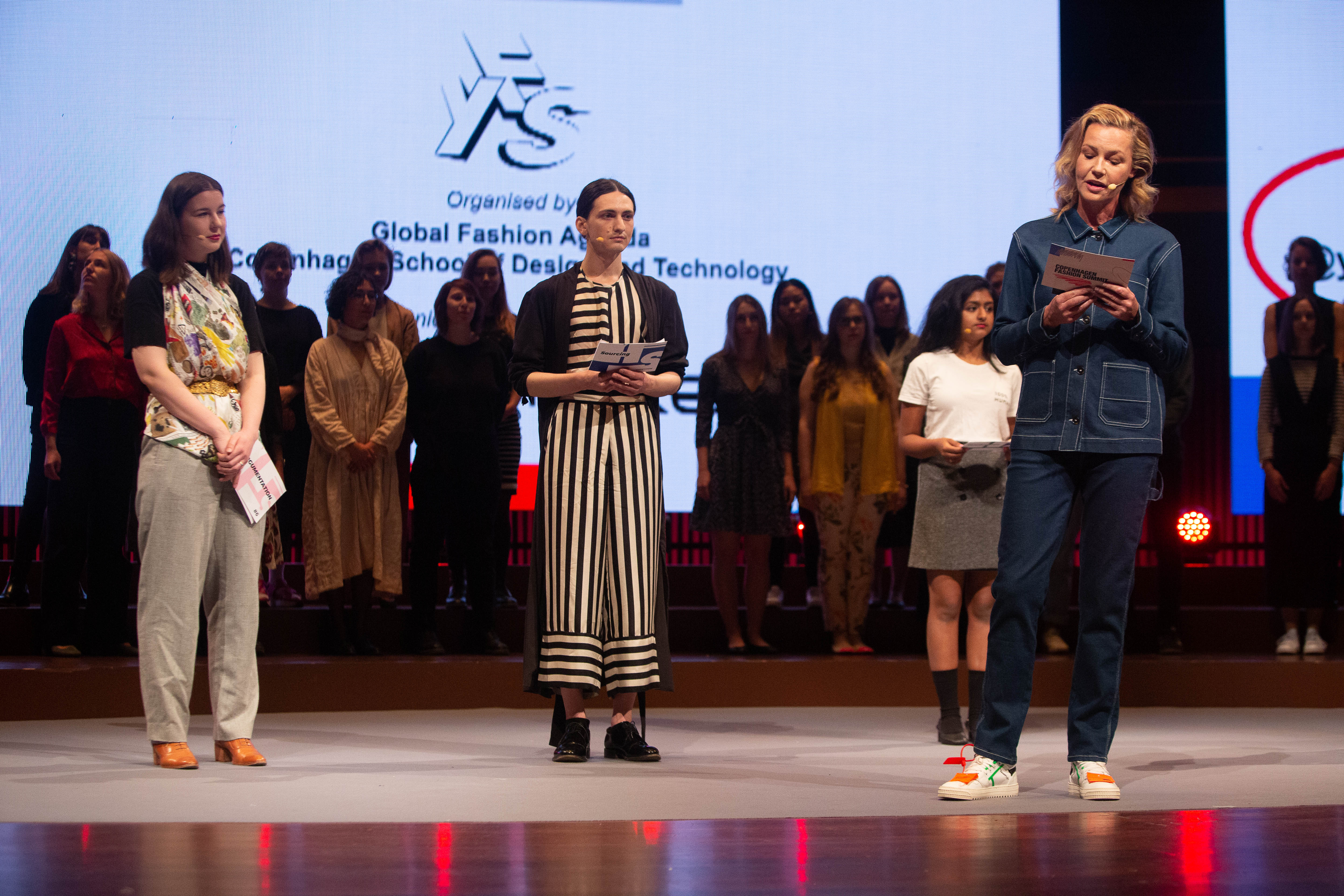A view from the Copenhagen Fashion Summit 2019
In its Statement on Copenhagen Fashion Summit 2019, published after the CFS publicised its programme on May 5, the Union of Concerned Researchers into Fashion questioned some of the language and continued assumptions made by much of the industry around sustainability. When industry leaders get together to talk about what they are doing to solve problems, there is a tendency to oversell ideas, to gloss over statistics, to make grand statements, and to pat themselves on the back for the slightest progress. While the Copenhagen Fashion Summit celebrated its 10th year of ‘rewriting fashion,’ there is no doubt that the industry is still working from the same notes it has always used.
As the UCRF wrote in its statement designed to bring a sense of perspective to the summit, “when we take the long view and examine fashion and sustainability progress over the last 30 years, we see that we have not come far at all. Certainly today there are more players and more organisations, more spectacles and celebrations, but not actual advances in ecological terms. So far, the mission has been an utter failure and all small and incremental changes have been drowned by an explosive economy of extraction, consumption, waste and continuous labour abuse.
“We would encourage people engaging with the agenda of the Copenhagen Fashion Summit to pay attention to terms such as “sustainable growth”, which in almost all cases is an oxymoron. While it is a term favoured by investors and asset managers, it is important to stress that the industry has spent 30 years trying to fix the old system, and it is getting worse, not better.”
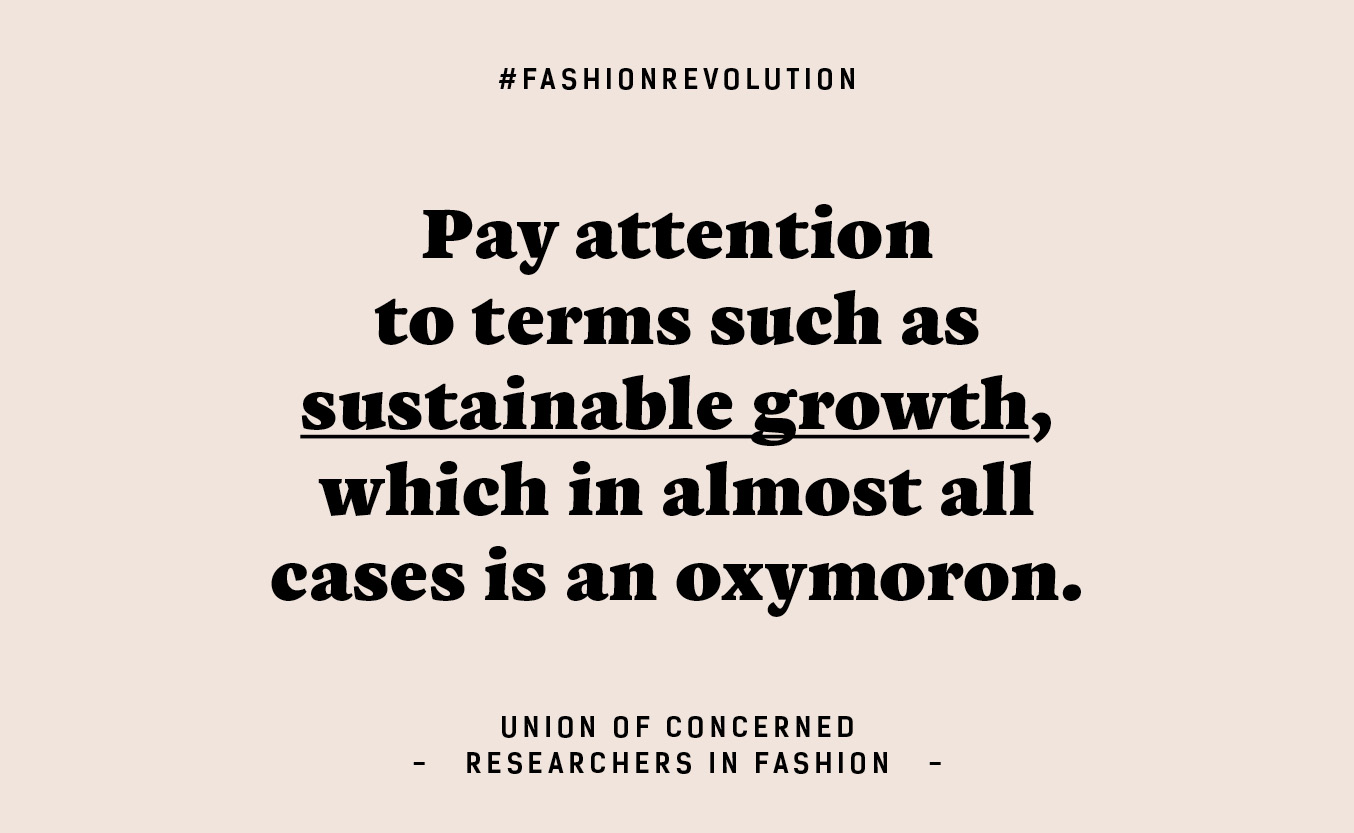
Measurable progress has slowed down in the last 12 months
Sobering words. So as the Fashion Summit began with opening remarks by Denmark’s Crown Princess Mary, there was nothing to applaud, and little to celebrate. The Global Fashion Agenda’s report The Pulse, reported that the progress the industry is making in terms of its environmental impact has slowed by a third compared with the growth of the sector. Which means if it continues as it is, it will continue to be a net contributor to climate change.
With cheap labour continuing to prop up an industry that still clings to volume, speed and margins as the main drivers to success – despite the fact that consumers are demanding that brands increase their positive social and environmental impact.
There were, however, many positive and useful moments during the summit. The majority of the 1,300 strong audience that attend the CFS because are curious, they want answers, they want to make a change. They know that the campaign for a more sustainable fashion industry has been going on for over thirty years – it didn’t start with this summit. And they are active citizens who question everything. For every CEO on stage calling for ‘strong leadership’ and advocating circularity without addressing the elephant in the room which is consumption, there were hundreds of conversations going on around the fringes, exchanging ideas, making connections, hoovering up scraps of information to take back to their NGOs, their brands, their publications and companies to change the way they work and make sure it is not business as usual. It is the chance encounters with a community who have gathered because they are united in a desire to create a different sort of fashion industry which are the most lasting and important.
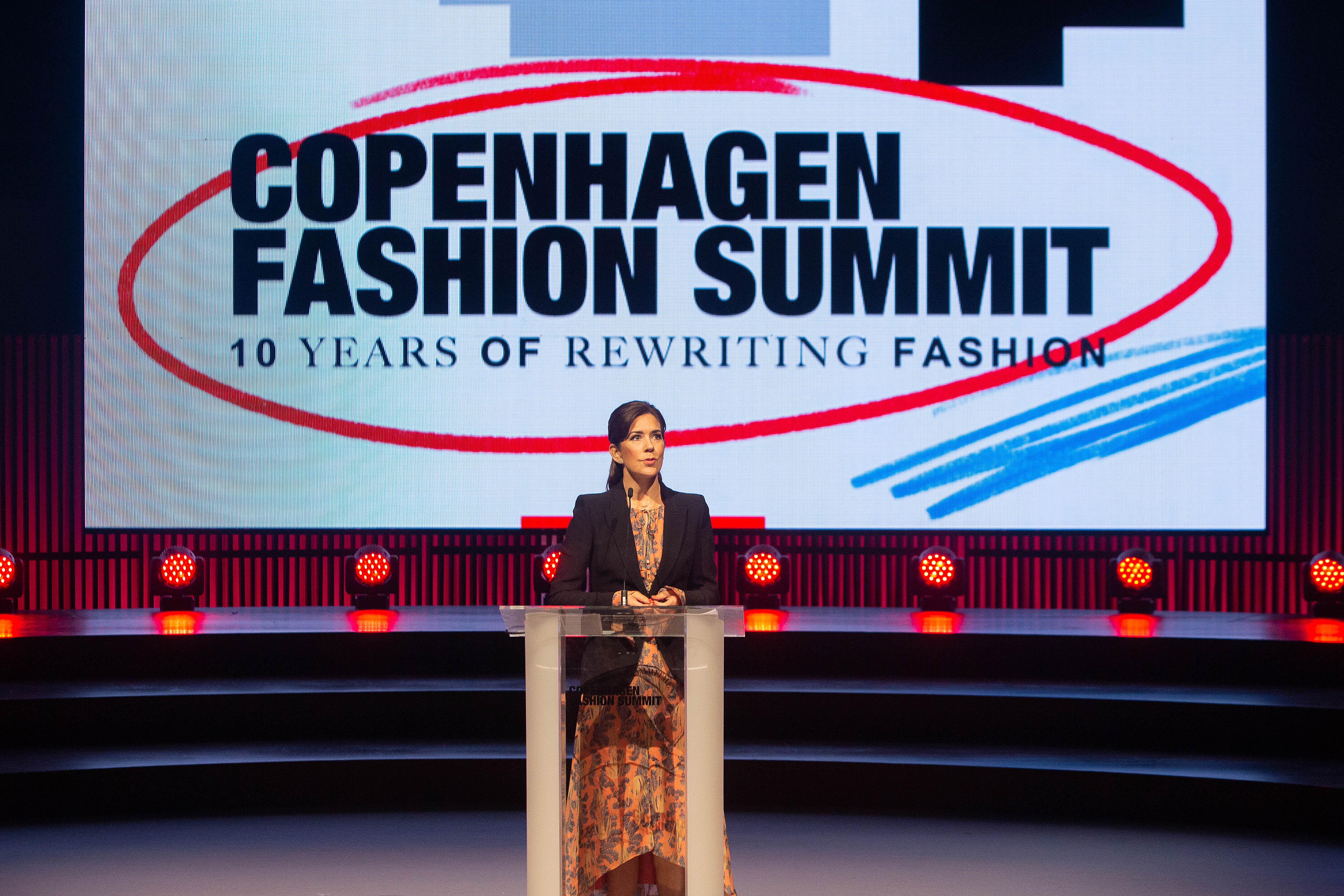
Made in Ethiopia
The most enlightening conversations were not necessarily those on the main stage. Taking a coffee break away from the panel discussions, I happened to sit next to Dorothée Baumann-Pauly from NYU Stern Center for Business and Human Rights. I wasn’t aware of the event she had hosted the night before the summit to publicise the report she has co-written Made in Ethiopia: Challenges in the Garment Industry’s New Frontier. The report investigates the nascent garment production hub which currently employs 25,000 workers at an industrial park 140 miles south of Addis Ababa. It’s an initiative started up by the Ethiopian government to attract the global fashion industry – including many brands whose CEOS and sustainability and supply chain officers were on stage, H&M, Tommy Hilfiger, Calvin Klein among them – to manufacture in the country. The chief attraction? No, it’s not state of the art factories, well-resourced creches, safe transportation, regulated working hours, or the guarantee of a living wage. The major incentive surely is the lowest wages of any garment-producing country. A basic wage of $26 per month – well below Myanmar, Bangladesh and Cambodia – mean that none of the above apply.
Dorothée pulled out a copy of the report and it makes for fascinating reading. It outlines how PVH, the conglomerate that owns Tommy Hilfiger and Calvin Klein with nearly $9.7 billion annual revenue, were looking to shift its manufacture away from Bangladesh after the Rana Plaza disaster. They were attracted by the country’s “green” power potential and the possibilities of a fresh start but two years after the opening of the Hawassa industrial park, things are not going as planned. The report makes recommendations to the Ethiopian government as well as to western brands manufacturing there. Now, this is a discussion I would have been keen to hear on the main stage at the summit.
PVH’s Chair and CEO Emanuel Chirico was on stage on day two. Sure, I was really interested to hear about their plans to make three of their best selling items – the dress shirt, underwear, and the T-shirt – recyclable as part of a circular system which can be returned in store and remade into new product. But I’d really love to hear how they are dealing with the issues at their new factory in Ethiopia. Challenges like this are the issues that need to be shared for everyone to learn from. The only time I heard Ethiopia mentioned was from Nazma Akter, the trade unionist and one of the few representatives at the summit of the garment workers. She said she was just back from a trip to see the conditions in Ethiopia and that she was shocked by what she had seen. And from her own perspective starting out as a garment worker in Bangladesh as a child, she has seen some shocking working conditions. A conversation between Ms Akter, Ms Baumann-Pauly and Mr Chirico might have even resulted in some actual change happening on the ground. So that seemed a lost opportunity. Instead, we sat and watched the screen and sighed.
We have eyes but can’t see
There were some other moments of real clarity, positive progress and stop-you-in-your-tracks brilliance. Paul Polman, Chair International Chamber of Commerce and The B Team, gave some home truths that really resonated about actions speaking louder than words. “The worst thing is having eyes and not be able to see: this is where we are at now,” he said. It was a sentiment echoed by Anindit Roy Chowdhury, Programme Manager for Labour Rights, C&A Foundation. “To say that we don’t know is not good enough. It’s unacceptable that none of us truly know if there is or isn’t child labour involved in the clothes we wear,” he said. “And we must invest in transparency.”
Experts and facts are needed more than ever to reiterate the stark truths about climate breakdown and the crisis we find ourselves in. Dr Martin Frick, senior director for policy and programmers coordination UN Climate Change told us: “the house is on fire, we are coming into a feedback loop where climate change is accelerating.” Time is running out.
Fashion, he said, contributes roughly 10 per cent of global CO2. He called for “radical co-operation between brands competing for a market share.” He also called on the industry for its ability to capture hearts and minds and influence behavioural change. “Fashion runs on the biggest source of renewable energy there is – human creativity.” The fact that the launch of the UN Fashion Industry Charter for Climate Action by Stella McCartney was one of the most publicised events at COP24 in Katowice in December demonstrates the power fashion has to get the message out. It is clear that we can harness the extraordinary influence we have to influence people’s consumption habits and choices in a way that all the experts and scientists in the world (David Attenborough not withstanding) can’t.
Another expert from outside of the fashion industry was Philip Lymbery, CEO of Compassion in World Farming, and author of Farmageddon: The True Cost of Cheap Meat who said, the only way forward for agriculture is to make it regenerative – and we must cut the number of cows being farmed by half if we are even to begin to redress the balance. “If we continue as we are, the UN warns we have only 60 harvests left,” he told us. “Then what? No food. No fibre. There’s a new game in town. Sustainability is over – sustainability is about doing tomorrow what you can do today.”
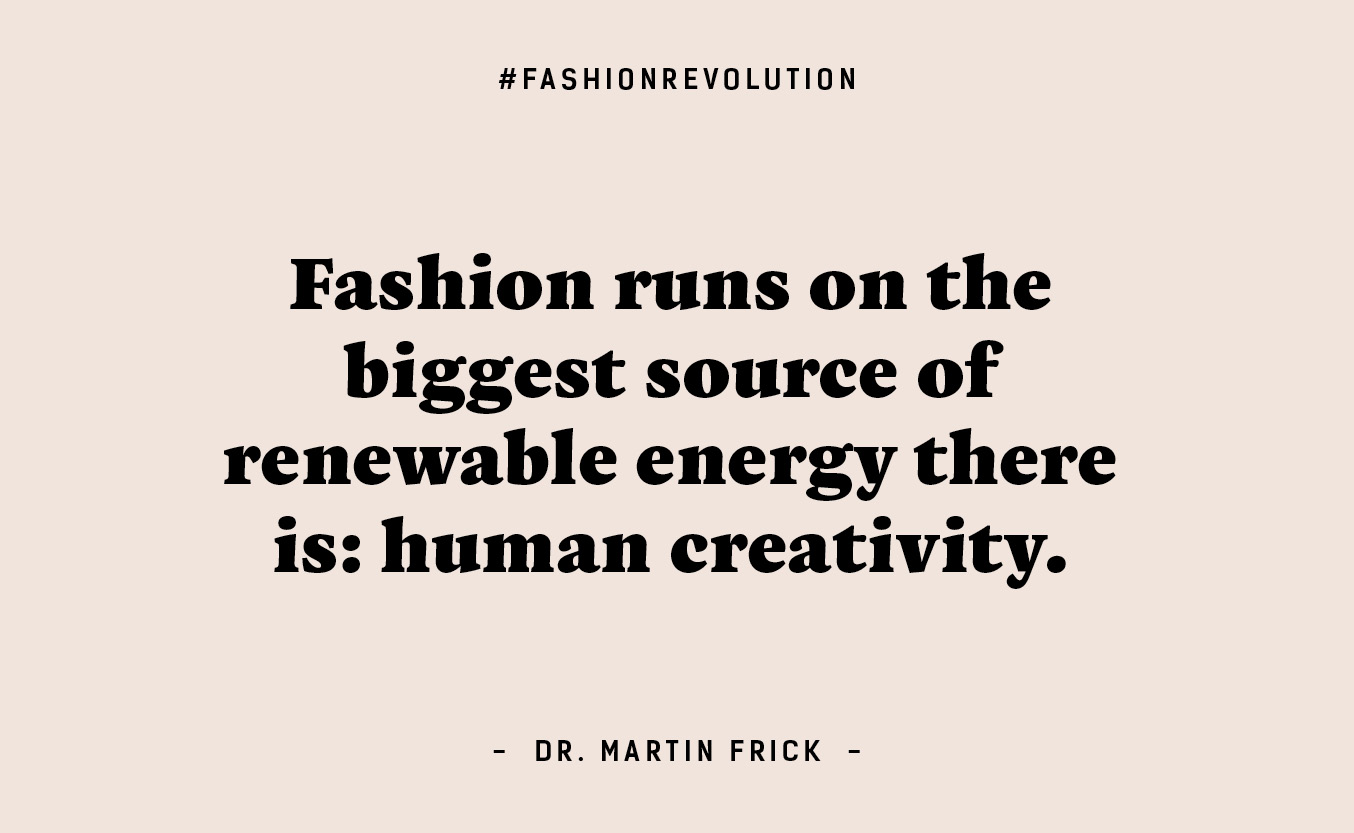
Technology and disruption
There was much talk about technology. Avery Dennison launched 10 solutions including a patent to use recycled materials in its labels. They are working with Plastic Bank to recover plastic before it reached the oceans and use it in their recycled and recyclable labels.
They also presented a project with 1019 ALYX 9SM using blockchain technology powered by EVRYTHNG to create a product that can tell its own story from the factory to its onward journey when it is eventually resold and the next buyer can see from the label’s scannable information that it is ‘authentic’ product, so addressing one of the industry’s other great issues of counterfeiting. Admittedly, the brand can control what information it chooses to release to the consumer (and what not to disclose) but it is a real step along the way of being able to ask – and answer Who Made My Clothes? It’s still at proof of concept stage but will be up and running later this year with the aim of allowing every garment to have its own digital i-D which will allow brands to track how much stock they have and – in theory – produce less as well as giving citizens the ability to track their garments at every step, including while they are in their care.
The world of digital traceability is a hot topic. Google announced its partnership with Stella McCartney to track the environmental impact of cotton and viscose. By pulling together data from a wide range of sources – NGOs, brands, manufacturers, and academics – they hope to stitch all the available data together to reveal the hidden environmental costs of the industry’s most widely used materials.
There were other companies working to make supply chains more visible – and standard practice – for consumers to access on the shop floor. The garment tag will become the key to a whole world of information designed to help concerned citizens make the best choices if they need to buy a new item of clothing. TrusTrace is an 18-month old start-up based in Stockholm where it benefits from the Swedish government’s innovation fund (other governments, please note!). One of the founders, Saravanan Parisutham told me how he had been inspired to start his business after the realisation that his father’s coconut farm in south India was being fed contaminated water. He said the water in the wells and rivers, used to irrigate the coconut farms, was being contaminated by local dyeing units. “The system accepts multiple levels of certification,” he explained. TrusTrace is already working with 1200 suppliers worldwide, in 20 countries. The 25 brands who pay to use the service include, Vaude and Filipa K.
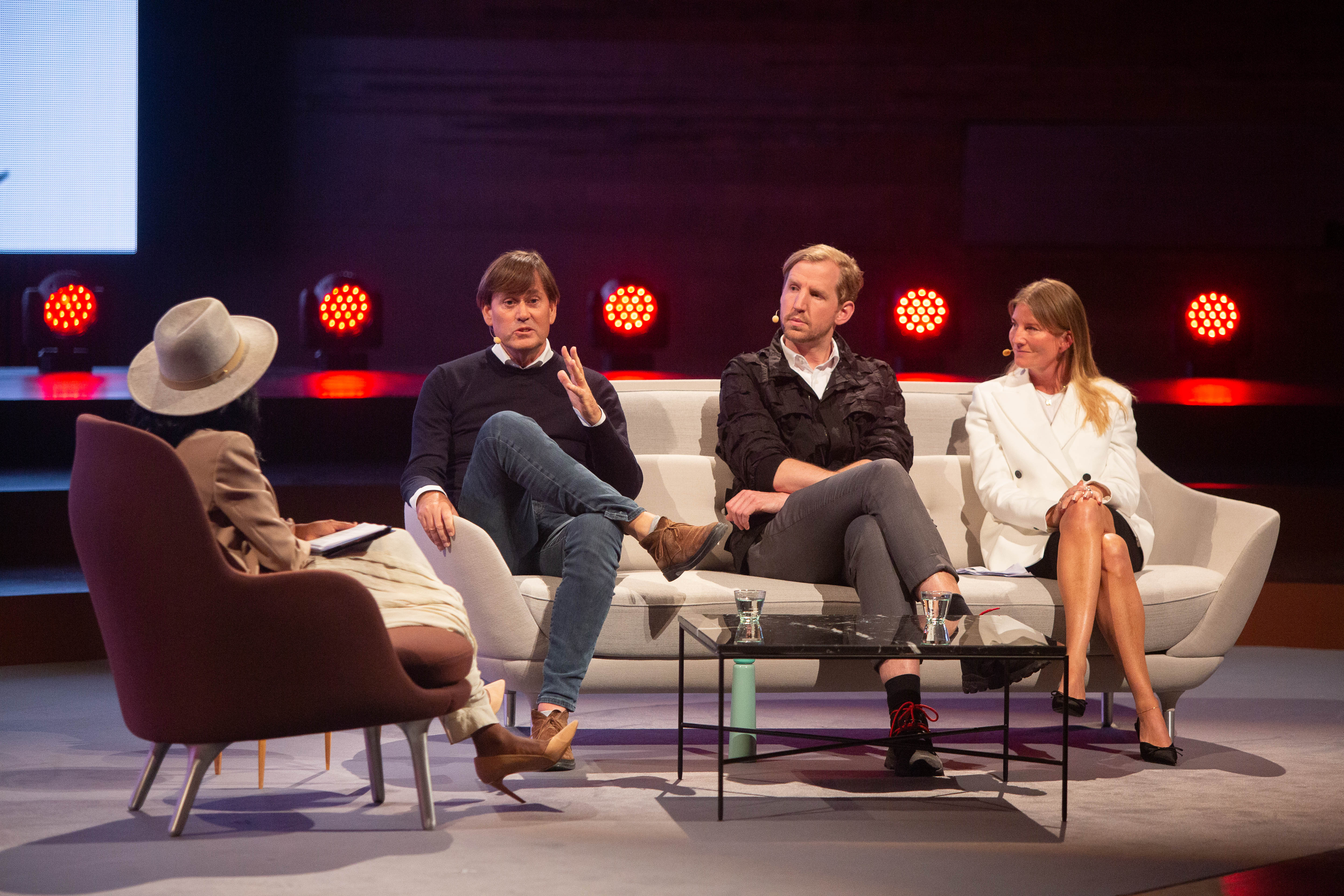
Designers can’t do this on their own
One of the criticisms from the UCRF was that fashion designers do not necessarily have the power to make decisions about material sourcing and production processes and assuming they do lets business leadership off the hook. That message is getting through to some brands who are joining the dots. Noel Kinder, Nike’s Chief Sustainability Officer talked about using waste as a ‘feedstock for new products…you have to start from the very beginning,” he said. Designers, supply chain officers, finance officers and CEOs all need to be united in their efforts to change the supply chain, materials and entire production systems. However, Christopher Raeburn, who recently took over as creative director at Timberland as well as running his own brand Raeburn, emphasised the importance of creative directors having a strong vision: “It’s our obligation as creatives to think about the products we create,” he said. “This isn’t a trend. We need to fundamentally change what we do as an industry.” He added that access to more sustainable materials has really shifted and stated that “transparency on every level” is key.
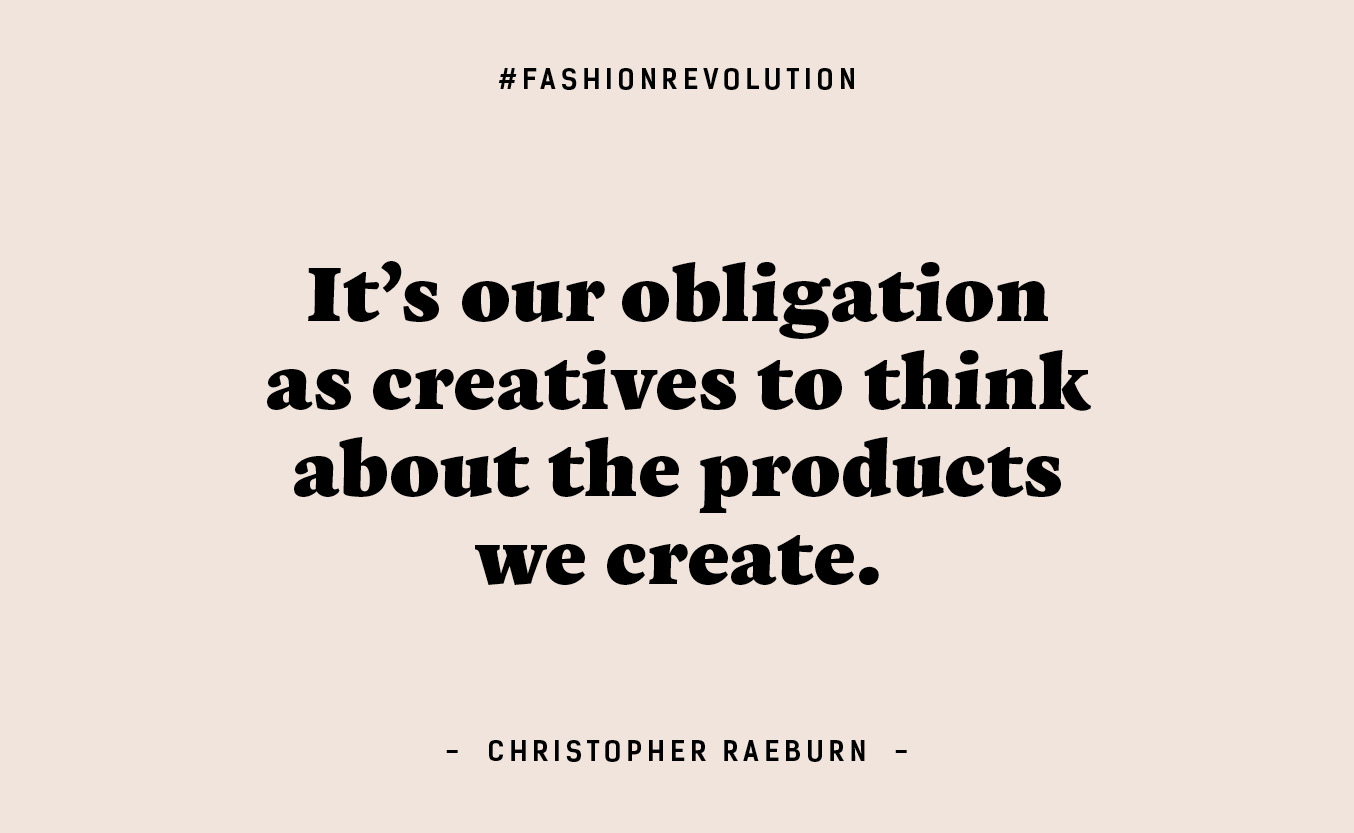
The voice of the youth – and the desperate need for greater inclusivity and diversity
The most clarity however, came from the Youth Summit, brought together to imagine a fashion industry that is built around Sustainable Development Goals 3 and 5. They came up with eight demands which you can read here (just to give you an idea of the tone, no. 5 starts with “We are done with your bullshit”). Their demands are for an industry that is based around core values of empathy, transparency, collaboration and equality.
“Look around and see whose voices you are missing…After 10 years of Copenhagen Fashion Summit, we still don’t have equality in the fashion industry,” said student activist from Cornell University, Hansika Iyer. “We are the future and we want to act now!” she told the audience of industry leaders. The anger and the frustration was palpable.
If real, systemic change is to happen with the urgency it needs, the sooner the next generation take control and relentlessly tackle the crisis of waste, spiraling levels of consumption, over production, labour abuse and inequality, the better. Forget profits and bonuses. The incentives driving the entire industry forward should be the goal of zero carbon emissions and other greenhouse gases. As we see from the past 10 years this generation of leaders has spent talking a lot, but not actually achieving very much, there’s a colossal amount of work to be done.
As Katharine Hamnett, who has been talking about the environmental impact of the industry for three decades said, “we’ve got to get our shit together.” It was time to act 30 years ago. Unfortunately, not enough people were listening back then. Emanuel Chirico said that it was “another world” ten years ago. Well, it wasn’t. The house was on fire back then, but the industry wasn’t interested. Industry leaders need to take responsibility for their inaction and complacency. At least now, eyes and ears are fully open and with enough will and urgency, we can all do our bit to put out the flames.
